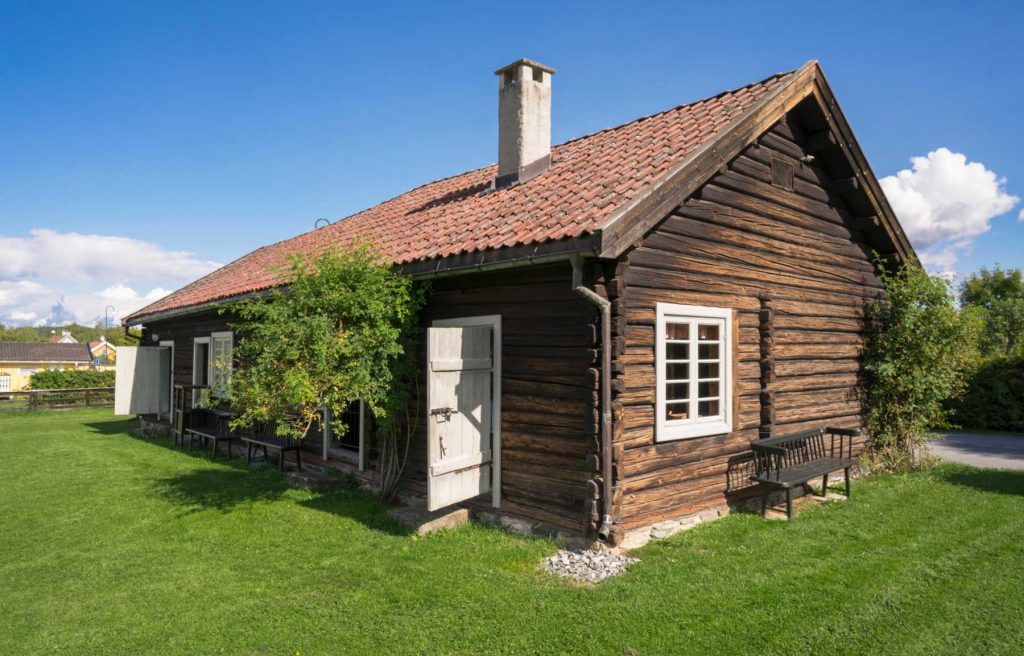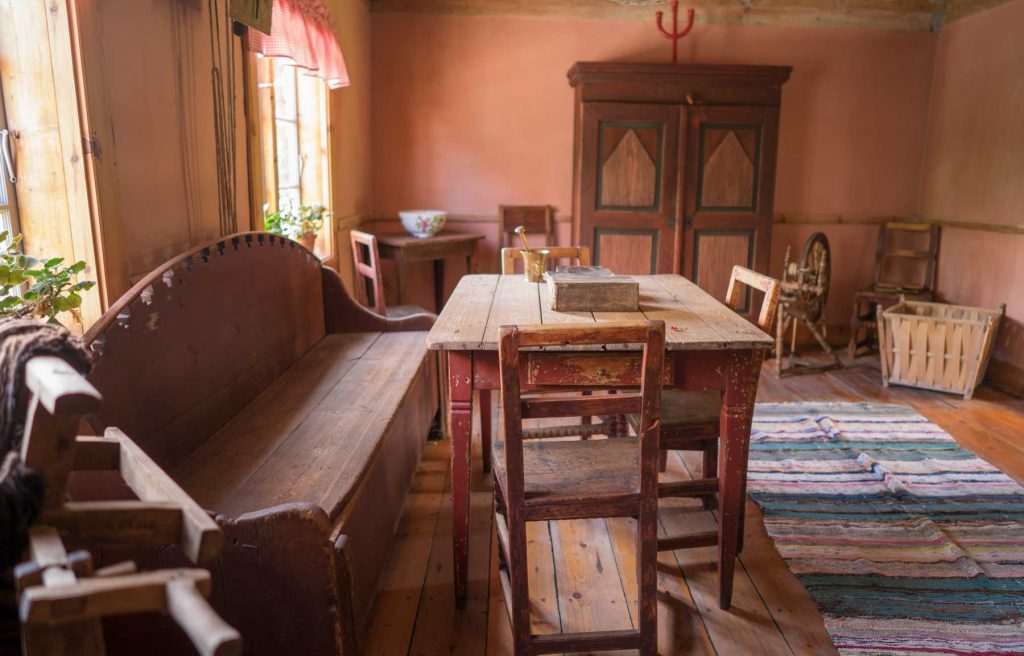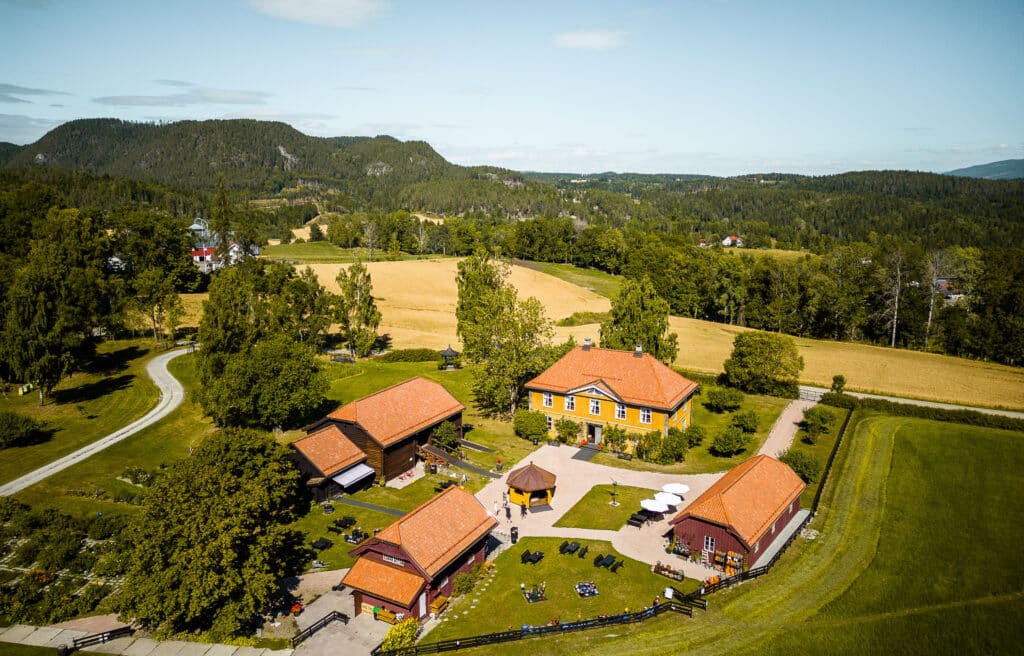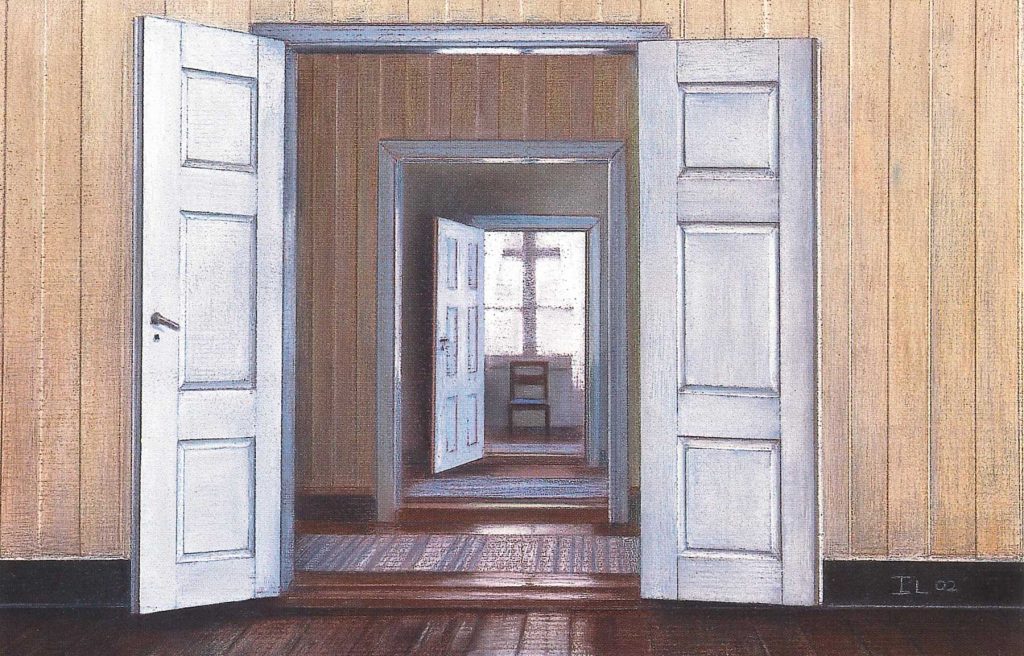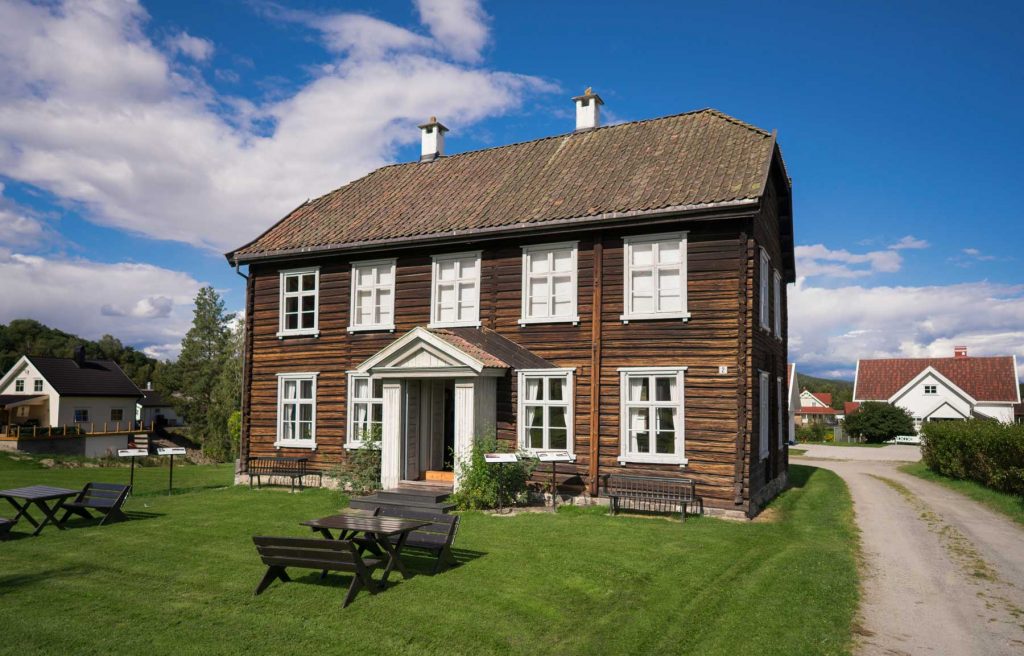Worker’s House No. 9
Worker's House No. 9 is our unattended museum for social history, and a natural place to stop along the cultural trail around Nymoen. A walk along the old workers' housing in Nymogata gives a picture of the life of Blaafarveværket's workers and their families.
What we know about the women's role in the home at Blaafarveværket is written from a survey carried out in 1845 at Nymoen by the French sociologist, F. Le Play. The women at Nymoen worked primarily in the home, but also some paid work on the farms nearby during the autumn and spring seasons. In the home, they worked on processing linen and wool for clothing, weeding, maintenance and harvesting on the patch of land the families owned, feeding livestock and gathering berries and mushrooms.
Audio and visual displays at Worker’s House No. 9 describe daily life in the 1840s, including what workers and their families ate for dinner. Peek into the living room, kitchen and widow’s room but don’t be alarmed if you hear voices: storytelling here is designed for your ears as well as your eyes!
If you’re interested in architecture, further exploration around Nymoen is recommended. Here you can follow changes and development in local building from the end of the 18th century through today.
Also in the outbuildings at Arbeiderboligen Nymoen no. 9, we show two craft exhibitions: a chair maker and a shoemaker's workshop.
